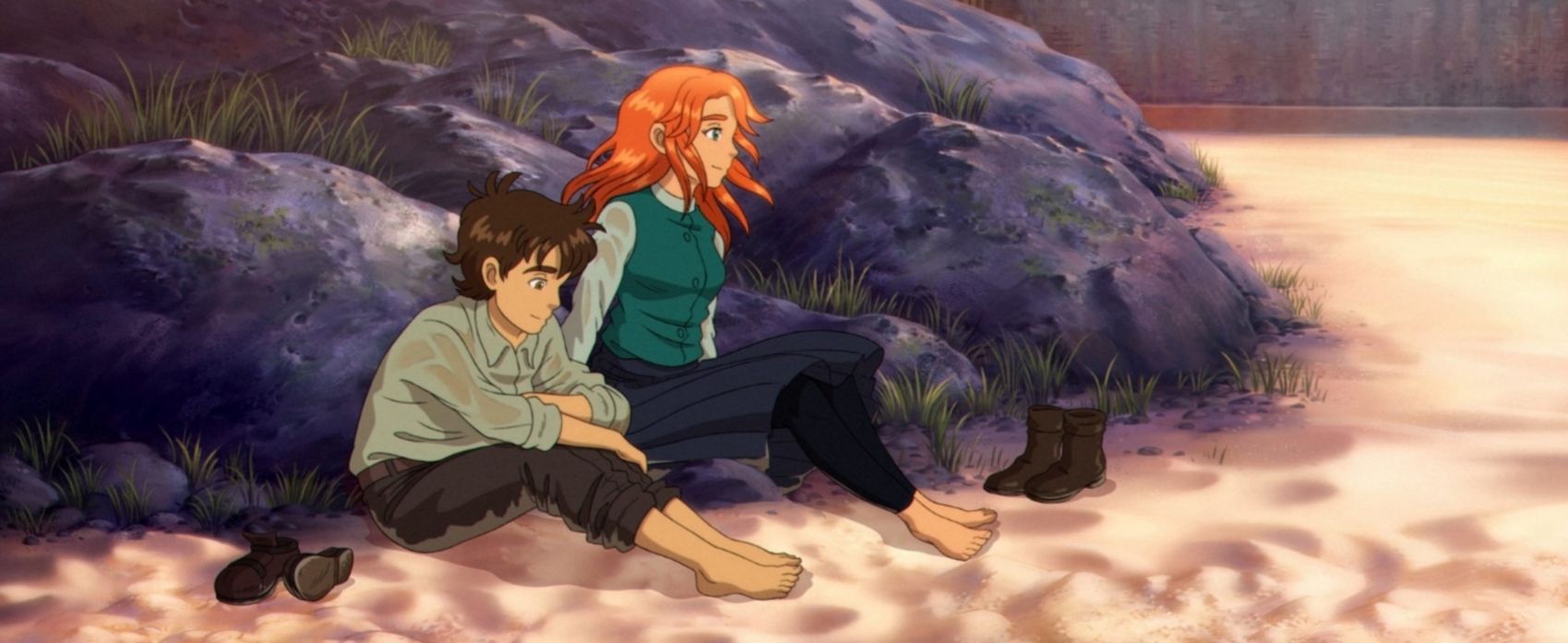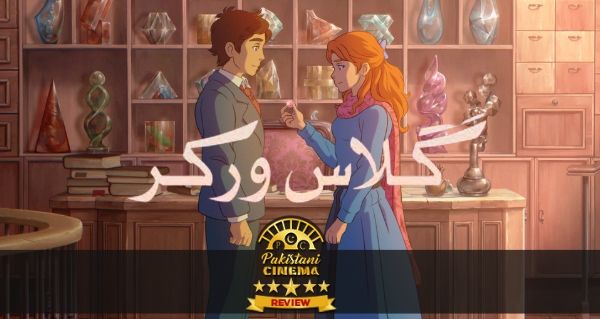،لے سانس بھی آہِستہ کِہ نازٗک ہے بہت کام
آفاق کی اِس کارگہِ شیشہ گَری کا
– میر تَقی میر
As frame after frame of sweeping vistas and meticulously hand-drawn images rolled by, it began to dawn on me that Usman Riaz had done more than create Pakistan’s first hand-drawn animated feature, he had created a film about art itself.

Since ‘Mah-e-Mir’ in 2016, no one had dared venture into that space again in Pakistan. And while ‘Mah-e-Mir’ was inaccessible to most audiences due to its use of the most exquisite Urdu and even Persian dialogue in certain scenes, ‘The Glassworker’ had no such caveats.
What is ‘The Glassworker’ About?
‘The Glassworker’ is about Tomas Oliver, a veteran glassworker with his own shop, and his son, Vincent. Vincent spends his time learning his father’s trade, playing in their beloved Waterfront Town, and speaking to a Jinn who has taken refuge in a cave below their shop.

As the specter of war looms over their heads, Colonel Amano arrives in their town to defend it. He brings his daughter Alliz, who is a gifted violinist. Vincent and Alliz take an immediate liking to each other, and their respective skills begin to blossom. All the while, war draws ever closer.
‘The Glassworker’ Emphasizes the Importance of Art in the Darkest Times
Art is often one of the first casualties in dark times. Who can think about painting a picture or singing a song when you can’t find something to eat? However, the film shows and reminds one that art can give solace to shattered and broken souls in the darkest times.

As the warships in the world of ‘The Glassworker’ get bigger and their shadows blot out the light, the glass statues grow more iridescent, and the music sounds ever sweeter.
Beautiful, twinkling glass and the sonorous melodies of the violin keep your attention at all times in the film, and remind one that in the darkness is perhaps when art makes the most sense and is needed the most. The sequences where Vincent crafts a rosebud out of glass or when Alliz plays a solo are particularly memorable.
Glass can shatter in an instance, and music disappears as soon as the instrument is silent. It is the ephemerality of art that makes it all the more precious.
The Glassworker’s Influences
Everyone knows by now that Usman Riaz’s debut feature is inspired by Hayao Miyazaki’s Studio Ghibli films. You can see it in every frame and the movements of the characters. However, there are unmistakable local influences in the story and the message.

Characters wear traditional dresses, roam familiar markets, and eat “gulaab jamuns”. The character of the Jinn, the box in the basement labeled “PECHS”, the war that parallels Pakistan’s constant struggles with its neighbour in the east; it all rings a very familiar bell. The buildings resembling British colonial style infused with Islamic style architecture all show that this is a Pakistani film.
‘The Glassworker’ Is a Nuanced Story
You won’t find any clear-cut heroes and villains in this story. It’s about real people who all have flaws and complexities and make compromises every day.

Colonel Amano is a disciplined soldier, focused on winning the war, but he also regrets that he never got to learn the violin like his daughter because his father pushed him to war. Vincent and Tomas are true artists who despise war, but they make compromises to their pacifist principles to survive.
The Sound of the Glassworker
Much will be said about how beautiful the film looks, but I want to single out its sound design and soundtrack for particular praise. When Alliz played the violin, when the Jinn’s voice echoed through the cave and when bombs struck the town, the theater thundered.

Nowhere were voices muffled, dubs out of sync, or music muted. The soundtrack by Usman Riaz and Carmine DiFlorio is very different from any that has come before in a Pakistani film. Infused with western classical and orchestral music, it provides an intensity to the film that most Pakistani flicks just don’t have.
Minor Problems
While the film is a milestone, it’s not without its faults. Certain characters seem underdeveloped and only serve to move the story along or create conflict. And the Urdu dialogue leaves quite a bit to be desired. It’s clearly been translated into Urdu after the script was first written in English.

However, the most obvious flaw in the film is some of the voice acting. While Khaled Anam as Tomas Oliver and Ameed Riaz as Colonel Amano more than hold their own and deliver good performances, it is Mooroo as an adult Vincent who sounds the most “odd”. A seasoned vlogger and video maker in his own right, he sounds very stiff here, as if he’s just trying to enunciate everything as well as possible.

Mariyam Paracha as Alliz is rough around the edges, but she sounds quite natural and at ease in the role. Maham Moazzam as Young Vincent gives a great performance, and Usman Riaz, who voices smaller characters throughout the film, also adds a definite charm to the film.
Conclusion
Usman Riaz chose glassworkers as his protagonists because he saw the glass blowers of Venice create incredible art. However, it probably dawned on him just how difficult and painstaking it was to create something like that while he was working on his film.
When he thanked Allah during the premiere introductory speech, he choked back tears. And I’m sure many in the audience were doing the same at the end of the film. It’s an experience that I will never forget.
‘The Glassworker’ is now showing in cinemas nationwide.



Comments
0 comments